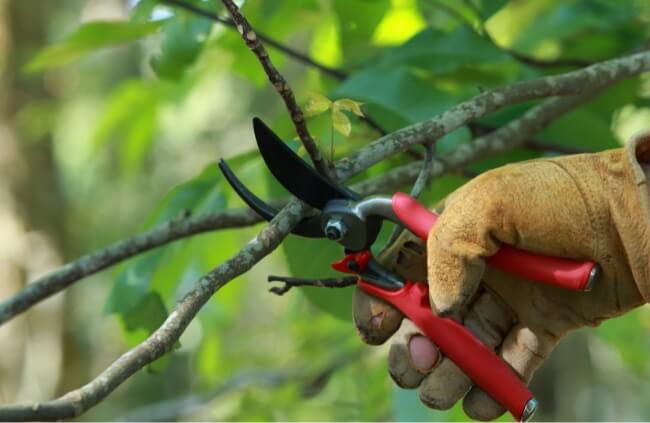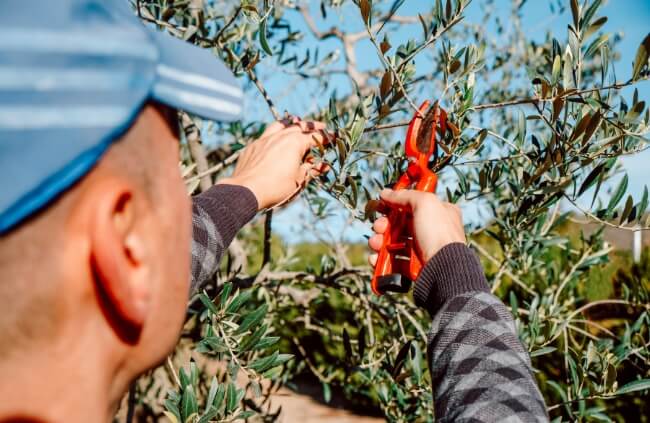While most new gardeners easily grasp the concepts of planting, watering, and raising seeds it is without fail that questions and doubts arise regarding when the best time is to prune. Pruning, apart from fertilising, is probably the most queried activity because plant requirements in the pruning department differ so wildly.
One style of pruning may work for one type of plant but may literally kill another. With prices of perennials constantly on the increase, it’s of little wonder that newbie gardeners aren’t prepared to make mistakes.
So, how does a novice gardener ensure that their plants are being correctly maintained? Let’s take a look at some of the basics.
More...
Pruning Tips for Novice Gardeners
Get Yourself a Good Quality Pair of Secateurs
Most of the pruning that you will do in your home garden will only require the use of some garden shears. While a pruning saw, pair of loppers and even a telescopic pruner may be needed from time to time I could safely assume that 90% of your pruning activity will be done with your secateurs.

Know the Difference Between Pruning and Deadheading
Pruning is most relegated to perennial plants, those that last in our garden longer than one season. Annuals, on the other hand, don’t need to be pruned but may require deadheading (the removal of spent blooms to encourage another flourish within the same season).
Having made that distinction, I think it would be helpful to confuse your current understanding by stating that perennials such as hebes, amongst others, also enjoy a mid-season deadhead.
Understanding the Concept of ‘Dormancy’
Most perennial plants enter a period of dormancy (plant hibernation) when they stop growing and no longer produce fruit. This happens, in most cases, on an annual basis and is usually within the winter months.
For deciduous trees (those that lose their leaves), their dormant period is easily recognisable while some evergreens – especially citrus – are sometimes difficult to ascertain.
A plant’s dormant period is usually the best time to prune. The reason for this is because the plant has already started shutting down and begun conserving its energy. While the plant is growing it works hard to source enough water and nutrients to produce blooms or fruit so struggling to cope with a prune can almost kill it.
Pruning Myths
One of the common misconceptions that many new gardeners face is the concept of “how” to prune and every gardening guru seems to have their own prescribed techniques. For the most part, many of these techniques are myths that try to overwhelm new gardeners and create a zen-like appearance for those who have “all” the knowledge.
Most plants respond well to any type of gentle pruning and will fail only when extreme pruning has taken place. The angle of your tongue at the time of the pruning cut is of little relevance!

When NOT to Prune
Obviously, as mentioned earlier, the times when plants shouldn’t be pruned is during their growth cycle. Also, adverse weather conditions – whether it be hot or cold – can be disastrous for plants and should also be avoided. Which leaves autumn (fall) and late winter as the best times to prune.
When to Prune Certain Types of Plants
- Fruit Trees – best pruned in late autumn to early winter. If you leave these until the end of winter, you will find that flowering may be sabotaged.
- Citrus Trees – best pruned in late-winter. While most citrus will still be fruiting all year round, their growth cycle is similar to other plants so a light prune before spring will encourage more fruit and better structure.
- Roses – another plant that is best pruned in late-winter/early spring. Roses are very appreciative of mid-season deadheading and should flower 3-4 times during a common season.
(Read our article on how to prune roses for more info.) - Conifers – these plants rarely need pruning apart for some shaping and structure maintenance. This can be done anytime but if your area is prone to frost/snow then it might be best to leave it until the weather warms up a little.
- Palms – don’t need pruning, although, like grasses, their spent fronds may need removing.
So, there you have it, you’ve completed Pruning 101. The best rule-of-thumb that I can offer is that the best time to prune is when your plant isn’t hell-bent on growing.
Published on June 3, 2023 by Gary Clarke
Last Updated on November 20, 2023




